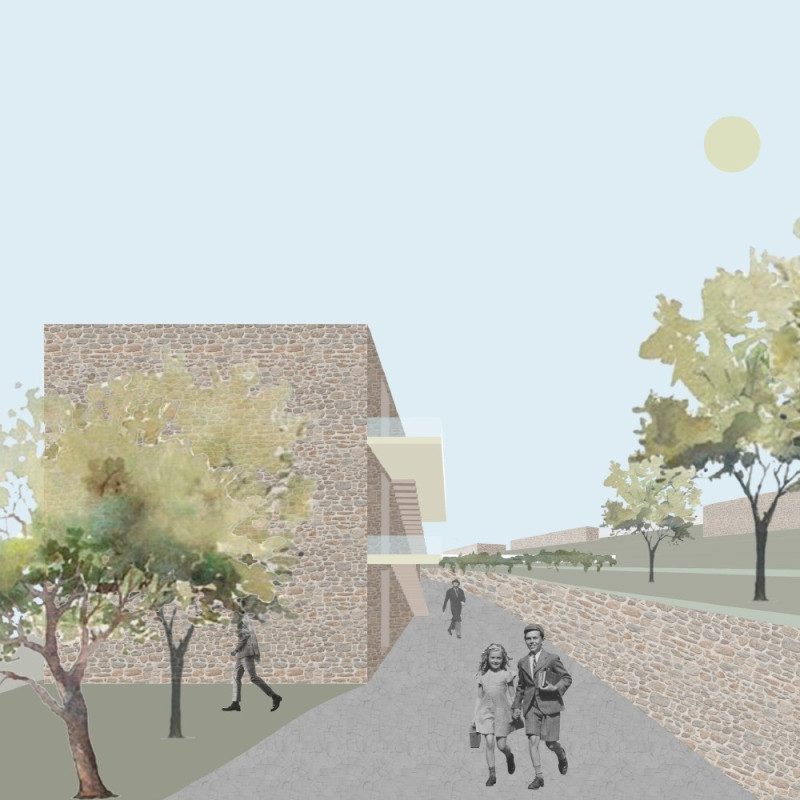5 key facts about this project
Situated in a thoughtful location that promotes inspiration and creativity, the Gaudi La Coma Artists' Residences project explores the three stages of human life: childhood, youth, and adulthood. The design primarily connects these life phases through a series of pathways that invite users to engage with their surroundings and each other. This approach not only highlights the importance of social interaction but also encourages personal reflection within the built environment.
Conceptual Framework
The design is anchored in the division of life stages, with each area specifically curated to reflect the unique qualities of childhood, youth, and adulthood. Pathways effectively link these segments, creating smooth transitions between spaces that serve various functions, from community gathering to personal retreat. This layout supports a comprehensive understanding of human experiences, emphasizing the value of both social connection and individual solitude.
Programmatic Elements
The adult area includes a Reception and Restaurant, along with Workshop and Co-Working spaces, as well as a Yoga Program. These spaces are designed to support both group activities and individual pursuits, balancing communal and personal needs. Their arrangement enables users to navigate easily between different environments, fostering interactions that feel natural and unforced.
Childhood Spaces
In the childhood segment, there are Hotel Rooms and an Artists' Residence that aim to nurture young individuals and provide them with creative outlets. These spaces focus on creating comfort and intimacy, allowing children and emerging artists to explore and express themselves freely. The balance between personal and shared spaces is crucial, as it helps foster both individual growth and social engagement among young residents.
Environmental Considerations
Thoughtfully arranged workshops and reflection areas enhance the user experience by creating spaces specifically for creativity and contemplation. The design incorporates public and private areas in a way that encourages balance, ensuring that the complex functions as a versatile setting for both personal introspection and group gatherings. Each design choice reflects a commitment to showing how architecture can support life's varying stages.
While the presentation did not specify materials, the project focuses on spatial organization and form to create experiences that resonate with users. The resulting design reflects an understanding of how space influences human interactions and personal development, emphasizing the importance of adapting environments to enhance life’s journey.






















































